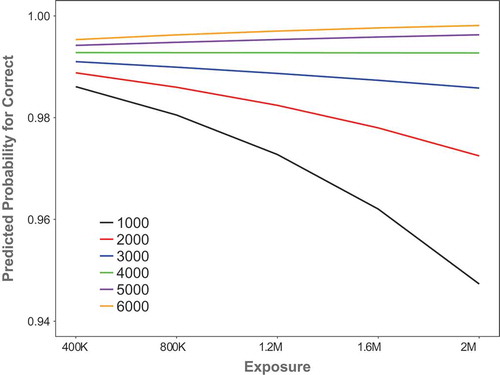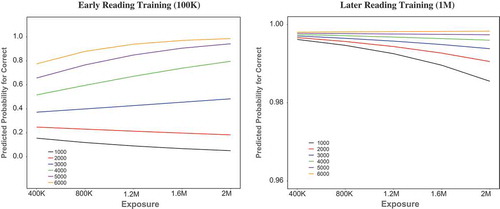Figures & data
Figure 1. The architecture of the model. Note. Numbers in the different layers indicate the number of units in that layer. Arrows show connections between layers.
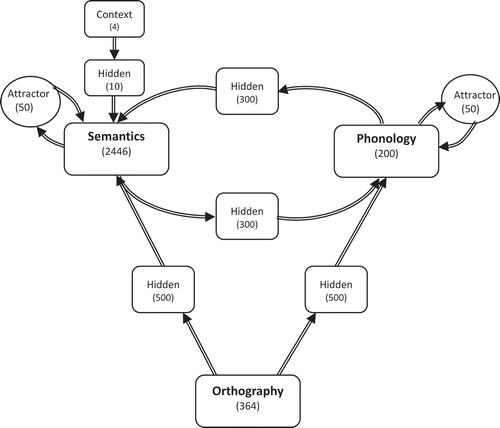
Figure 2. The pretraining performance of the model on the hearing task (phonology to semantics) and speaking task (semantics to phonology) with six vocabulary sizes (1,000 to 6,000). Note. K = thousand; M = million.
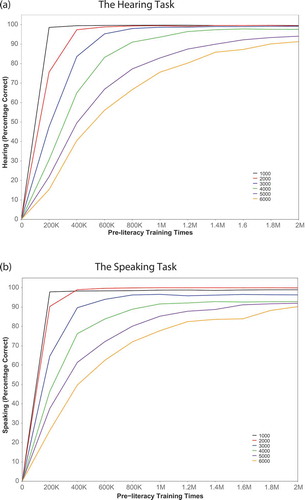
Figure 3a. The reading fluency performance of the model trained with six vocabulary sizes (1,000 to 6,000), with each panel illustrating the five amounts of exposure (400K, 800K, 1.2M, 1.6M, and 2M). Note. K = thousand; M = million.
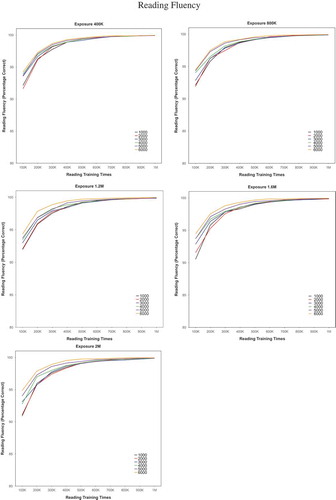
Figure 3b. The written word comprehension performance of the model trained with six vocabulary sizes (1,000 to 6,000), with each panel illustrating the five amounts of exposure (400K, 800K, 1.2M, 1.6M, and 2M). Note. K = thousand; M = million.
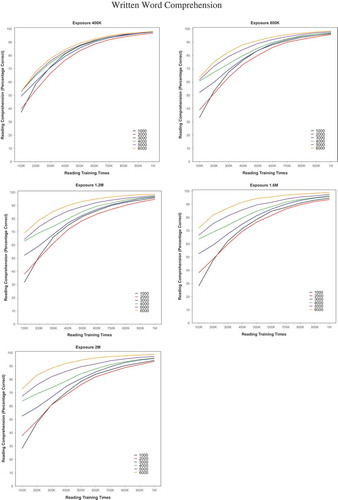
Figure 4. Two-way interaction between exposure and vocabulary for reading fluency. Note. K = thousand; M = million.
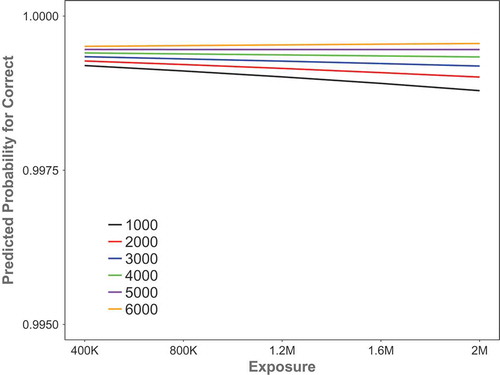
Figure 5. The interaction between vocabulary and exposure for reading fluency at early reading (100K) and later reading (1M). Note. K = thousand; M = million.


